For centuries, Italian men have been synonymous with sartorial excellence. Their innate ability to blend sophistication with a relaxed charm creates a look that is both aspirational and seemingly effortless. It’s not about chasing fleeting trends or splurging on every designer label; it’s about understanding fundamental principles of quality, fit, and attitude.
If you’ve ever admired the confident swagger of a man strolling through the streets of Milan or Florence, impeccably dressed yet never appearing overly rigid, you understand the allure of Italian style. This isn’t about being a “fashion victim” or sacrificing comfort for appearance. On the contrary, true Italian dressing is about embracing personal style, investing wisely, and presenting yourself with an air of understated confidence.
At mensnorth.com, we believe that true masculinity isn’t about flashy displays, but about a quiet strength and an undeniable presence. And when it comes to dressing, the Italian approach aligns perfectly with this philosophy. It’s about looking sharp, feeling comfortable, and exuding an aura of competence and composure. Forget the flimsy fast fashion; we’re talking about building a wardrobe that serves you, enhances your best features, and stands the test of time.
So, if you’re ready to elevate your game and infuse your wardrobe with that distinctive Italian flair, read on. We’ve distilled the essence of Italian menswear into 10 actionable, no-nonsense principles that any man can adopt. This isn’t about being a “soft” fashionista; it’s about being a man who understands the power of presentation.
1. Embrace Quality Fabrics: The Foundation of Italian Style
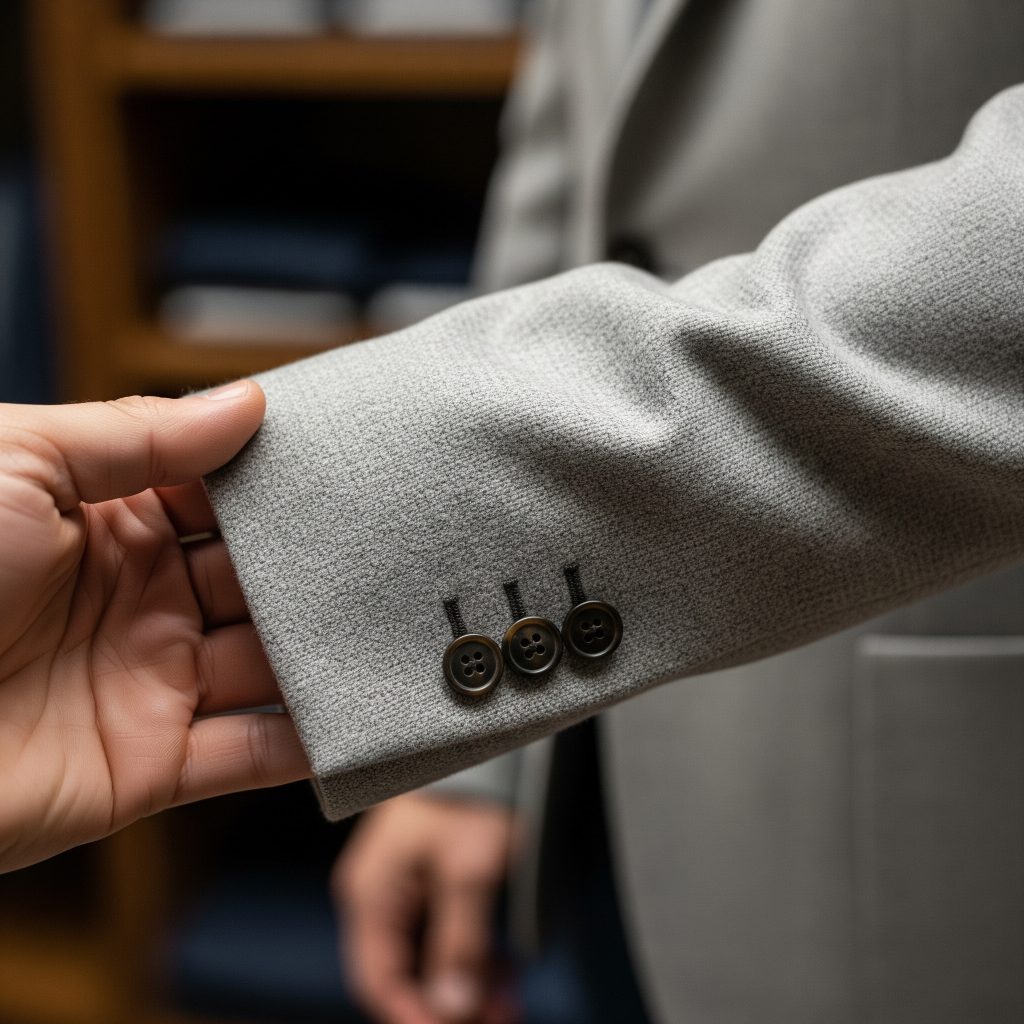
The Principle: In the world of Italian menswear, fabric isn’t just a material; it’s a philosophy. It’s the silent handshake that tells you everything about the garment. Italian men understand that true luxury lies not in ostentatious branding, but in the tactile pleasure and longevity of superior textiles. They prioritize natural fibers – wool, linen, cotton, silk, and cashmere – for their breathability, drape, and inherent elegance. This isn’t just about looking good; it’s about feeling good, ensuring comfort in varying climates, and investing in pieces that will last. Synthetic blends, while sometimes offering practical benefits, often fall short in capturing the soul of Italian style. They lack the natural fall, the ability to breathe, and the subtle richness that only comes from genuine fibers.
Why it Matters: High-quality fabrics allow clothes to hang beautifully, creating a more flattering silhouette. They adapt to your body, breathe in warm weather, and provide warmth without bulk in colder climates. A linen shirt on a hot summer day in Sicily feels completely different from a polyester one; the former offers a refreshing coolness, while the latter can feel stifling. Similarly, a fine wool suit drapes elegantly, resisting wrinkles and maintaining its shape far better than a cheap blend. This focus on natural fibers is also a nod to sustainability and classic craftsmanship, values deeply embedded in Italian culture. It’s an investment, yes, but one that pays dividends in comfort, appearance, and durability.

How to Adopt It:
- Inspect Fabric Content: Always check the label. Aim for 100% natural fibers whenever possible.
- Feel the Fabric: Touch is crucial. Does it feel soft, substantial, and luxurious? Does it have a good hand (the way it feels when handled)?
- Prioritize for Key Pieces: Invest in high-quality fabrics for your core wardrobe items: suits, blazers, dress shirts, and knitwear. For example, a crisp cotton poplin or twill shirt, a breathable linen blend for summer trousers, or a rich merino wool sweater for colder months.
- Understand Seasonal Fabrics: Learn to differentiate between seasonal fabrics. Lightweight wools, linen, and cotton are perfect for spring/summer, while heavier wools, cashmere, and flannel excel in autumn/winter.
- Beyond the Surface: Don’t just look at the weave; consider the origin and reputation of the fabric. Italian mills are renowned for their quality, and fabrics from regions like Biella are legendary for their wools.

2. Master the Art of Layering: Adding Depth and Dimension
The Principle: Layering in Italian style isn’t about bundling up; it’s about creating visual interest, adapting to temperature changes with ease, and adding sophistication. It’s a strategic process of combining different garments to achieve a harmonious and stylish effect. Think of it as building an outfit piece by piece, each layer contributing to the overall aesthetic without overwhelming it. This technique allows for versatility, enabling you to transition seamlessly from a cooler morning to a warmer afternoon, or from a business meeting to an evening aperitivo.
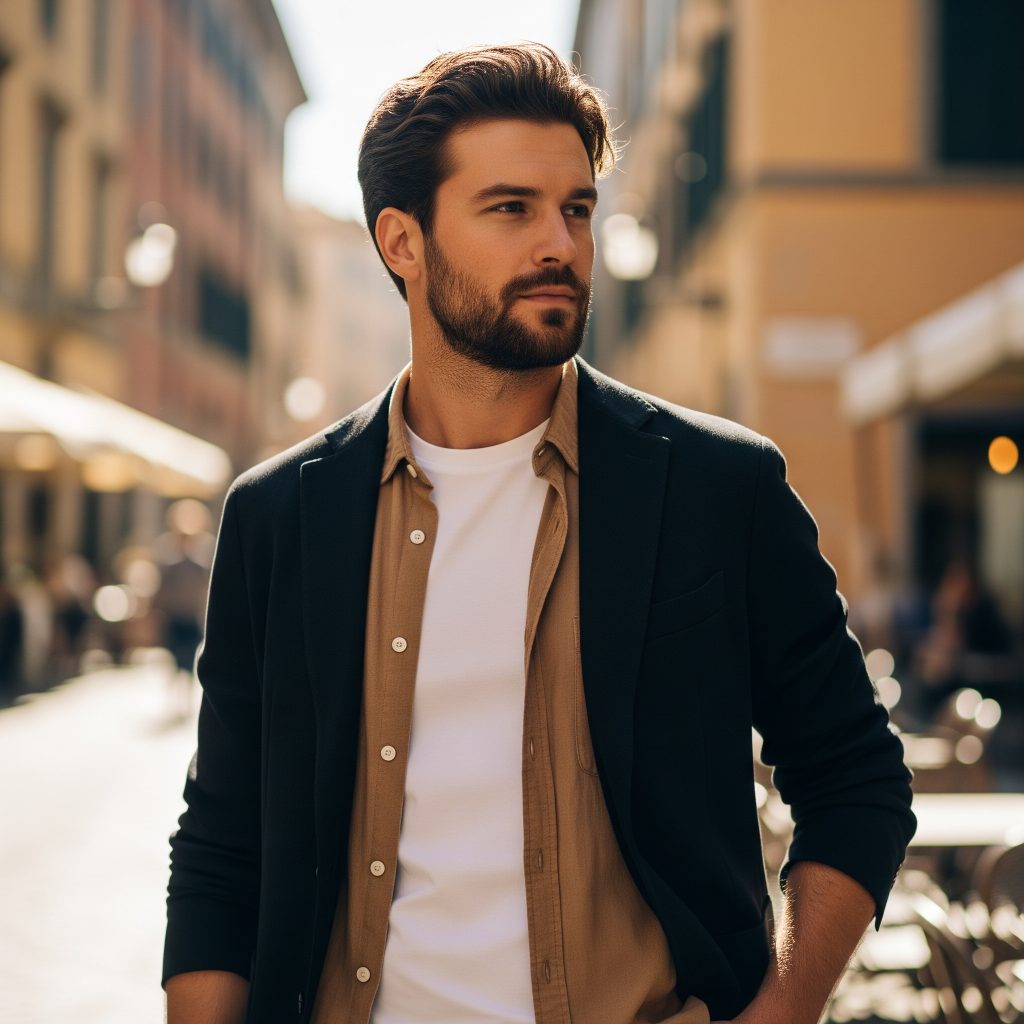
Why it Matters: Effective layering adds depth, texture, and visual complexity to an outfit. A simple combination of a t-shirt under an open linen shirt, topped with an unstructured blazer, immediately elevates a casual look. It also offers practical benefits: you can easily shed a layer if it gets warm or add one if the temperature drops. Beyond practicality, layering allows for subtle expressions of personality through color combinations, fabric pairings, and the interplay of different cuts and lengths. It demonstrates a refined understanding of how clothes work together.

How to Adopt It:
- Start with a Base Layer: This is typically a light, breathable item like a t-shirt (crew neck or v-neck), a polo shirt, or a thin dress shirt.
- Add a Mid-Layer: This could be a lightweight knit (e.g., merino wool or cotton), an open shirt, a gilet/vest, or a thin cardigan.
- Top with an Outer Layer: A blazer is often the go-to, but a stylish lightweight jacket (like a Harrington or a chore jacket) can also work. For colder weather, a well-tailored overcoat.
- Consider Proportions and Lengths: Ensure each layer is visible without looking bulky. The outer layer should typically be longer than the mid-layer, which should be longer than the base layer.
- Mix Textures: Combine different fabric textures for visual interest – a smooth cotton shirt under a textured wool blazer, for example.
- Think About Color Harmony: Use colors that complement each other. Often, Italians stick to a neutral base and introduce one or two accent colors through their layers. For instance, a white t-shirt, a navy unstructured blazer, and a light blue dress shirt underneath.

3. Invest in Well-Tailored Pieces: The Mark of a True Gentleman
The Principle: This is arguably the most crucial element of Italian style. Italians understand that even the most expensive garment will look cheap if it doesn’t fit properly. Conversely, a moderately priced garment, expertly tailored, can look incredibly luxurious. “Tailored” doesn’t necessarily mean bespoke; it means paying attention to how a garment fits your body, ensuring clean lines, appropriate lengths, and a flattering silhouette. It’s about precision and attention to detail that elevates the entire look.
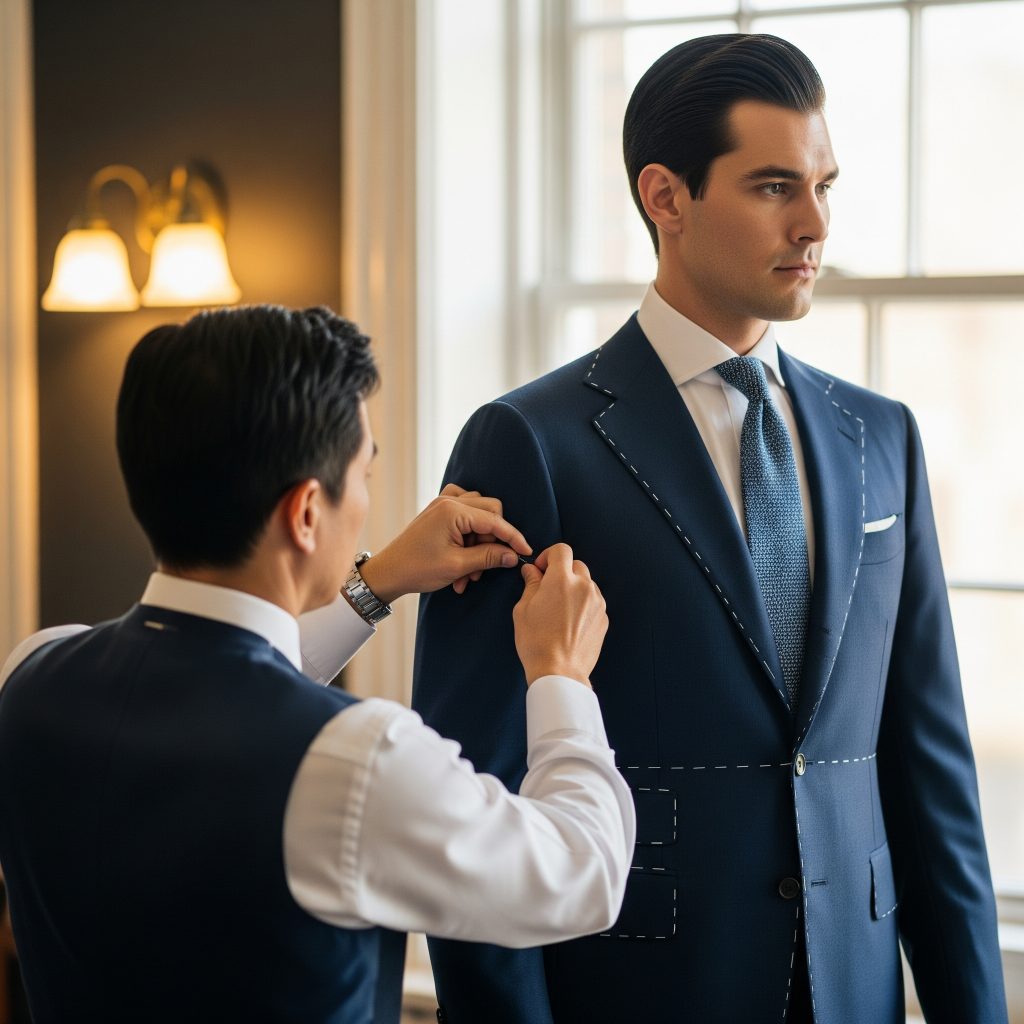
Why it Matters: A well-fitting garment enhances your natural physique, makes you appear more put-together, and instantly conveys confidence and professionalism. Clothes that are too baggy drown your frame, making you look sloppy and larger than you are. Clothes that are too tight restrict movement and can look awkward. The sweet spot, which Italians consistently hit, is a fit that is close to the body without being restrictive, allowing for comfort and elegant movement. This principle applies to everything from your suits and blazers to your shirts and trousers.
How to Adopt It:
- Know Your Measurements (Roughly): Have a general idea of your chest, waist, inseam, and sleeve lengths.
- Prioritize Fit Over Brand: When buying off-the-rack, always prioritize how an item fits in the shoulders (for jackets and shirts) and waist (for trousers). These are the hardest areas to alter.

- Befriend a Tailor: A good tailor is an invaluable asset. They can transform an “okay” fit into a “perfect” fit. Common alterations include:
- Jacket Sleeves: Should end at your wrist bone, exposing about half an inch of shirt cuff.
- Jacket Length: Should cover your backside and end around the middle of your thumb when your arms are relaxed.
- Trouser Length: This is personal preference, but generally, a slight break (one fold) or no break at all is preferred for a cleaner look.
- Trouser Waist/Seat: Should fit comfortably without being too tight or baggy.
- Shirt Fit: Should be slim enough to avoid excess fabric billowing at the waist, but not so tight that buttons pull.

- Understand Different Cuts: Familiarize yourself with slim fit, regular fit, and modern fit to find what suits your body type best. Italian tailoring often leans towards a more contemporary, sleek fit.
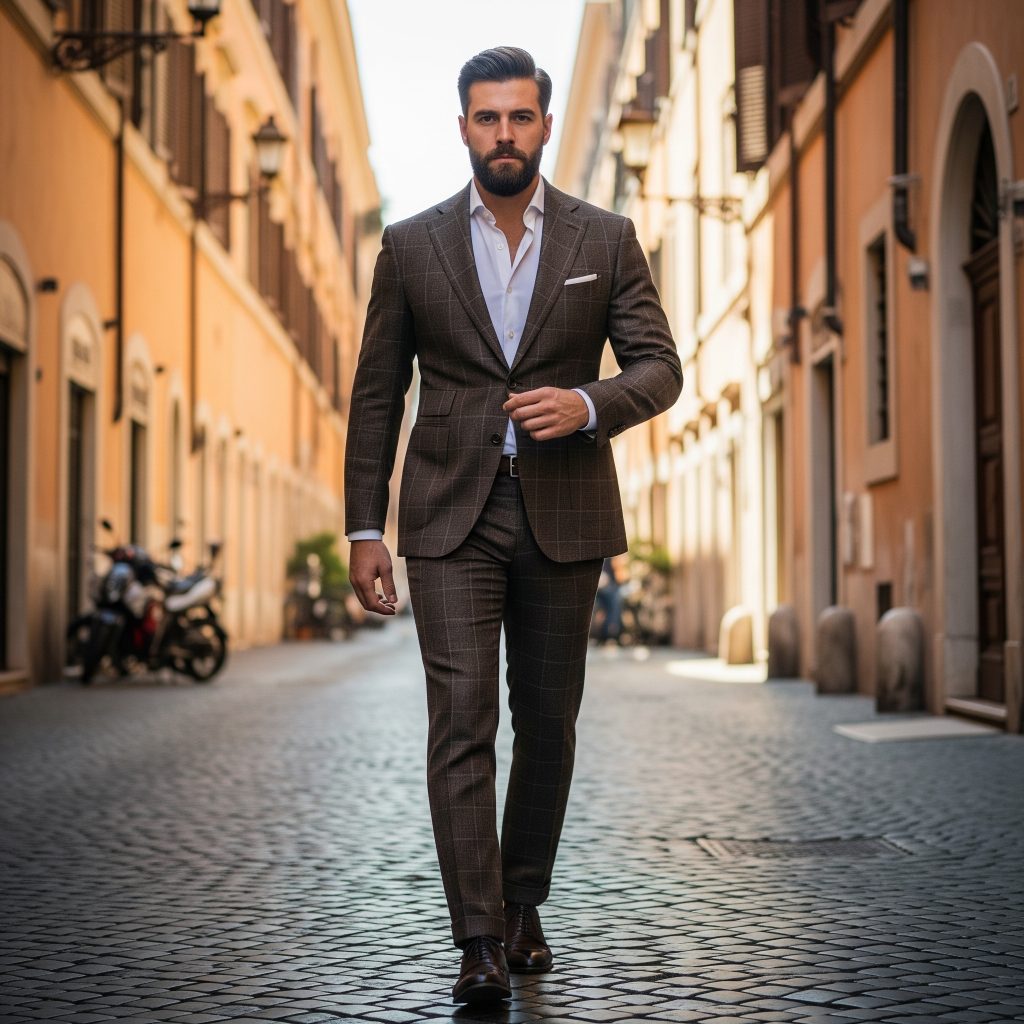
4. Understand Proportions: The Art of Visual Balance
The Principle: Italian style isn’t just about how individual garments fit; it’s about how they relate to each other in terms of length, width, and volume. Proportions dictate the overall visual harmony of your outfit. Italian men often play with subtle shifts in proportion to create a sleek, elongated, and sophisticated silhouette. This might involve a slightly higher-waisted trouser paired with a shorter jacket, or a narrower lapel on a blazer that balances the width of the shoulders.
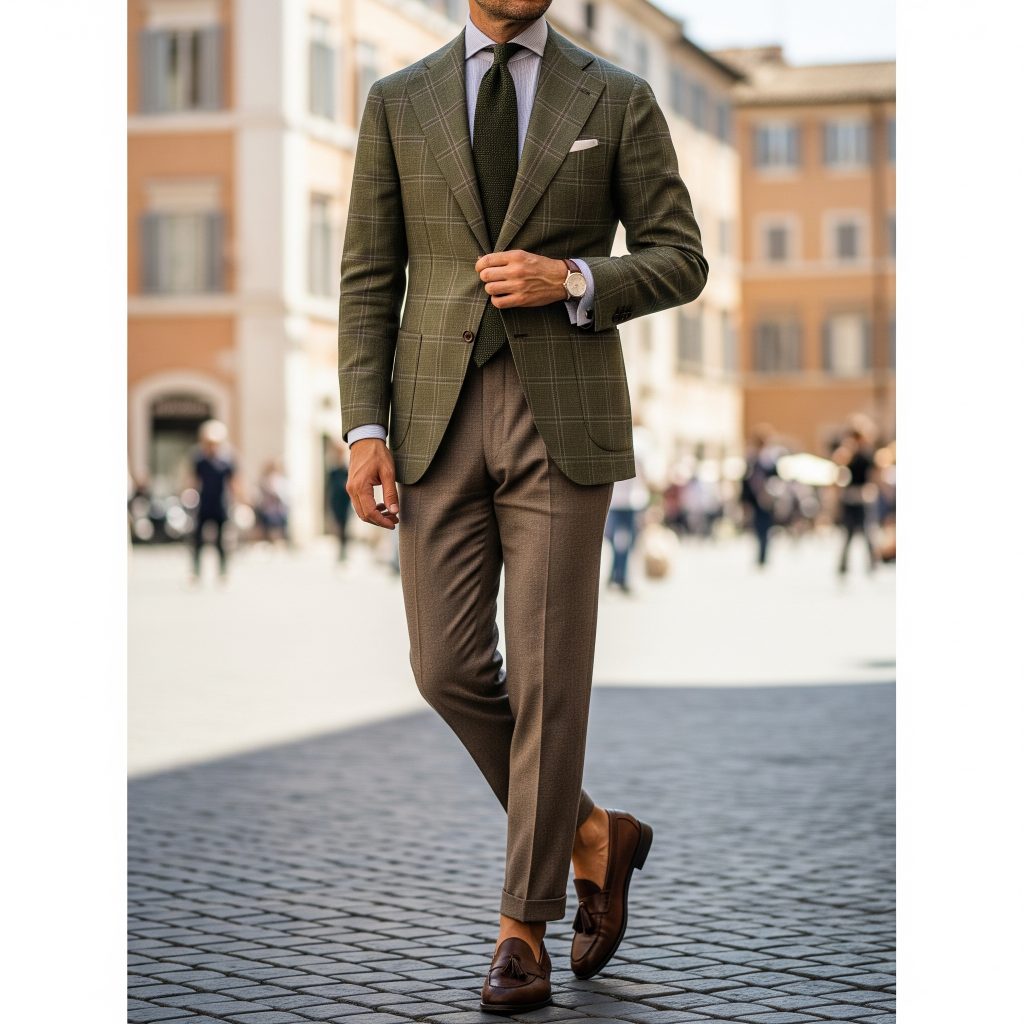
Why it Matters: Correct proportions can make you look taller, slimmer, and more balanced. Incorrect proportions can make you look disproportionate, shorter, or wider. For example, trousers that are too long can bunch unflatteringly at the ankles, making your legs appear shorter. A jacket that’s too long can overwhelm your frame. Italians master the art of creating a “clean line” from top to bottom, avoiding visual clutter and ensuring each element contributes positively to the overall shape.
How to Adopt It:
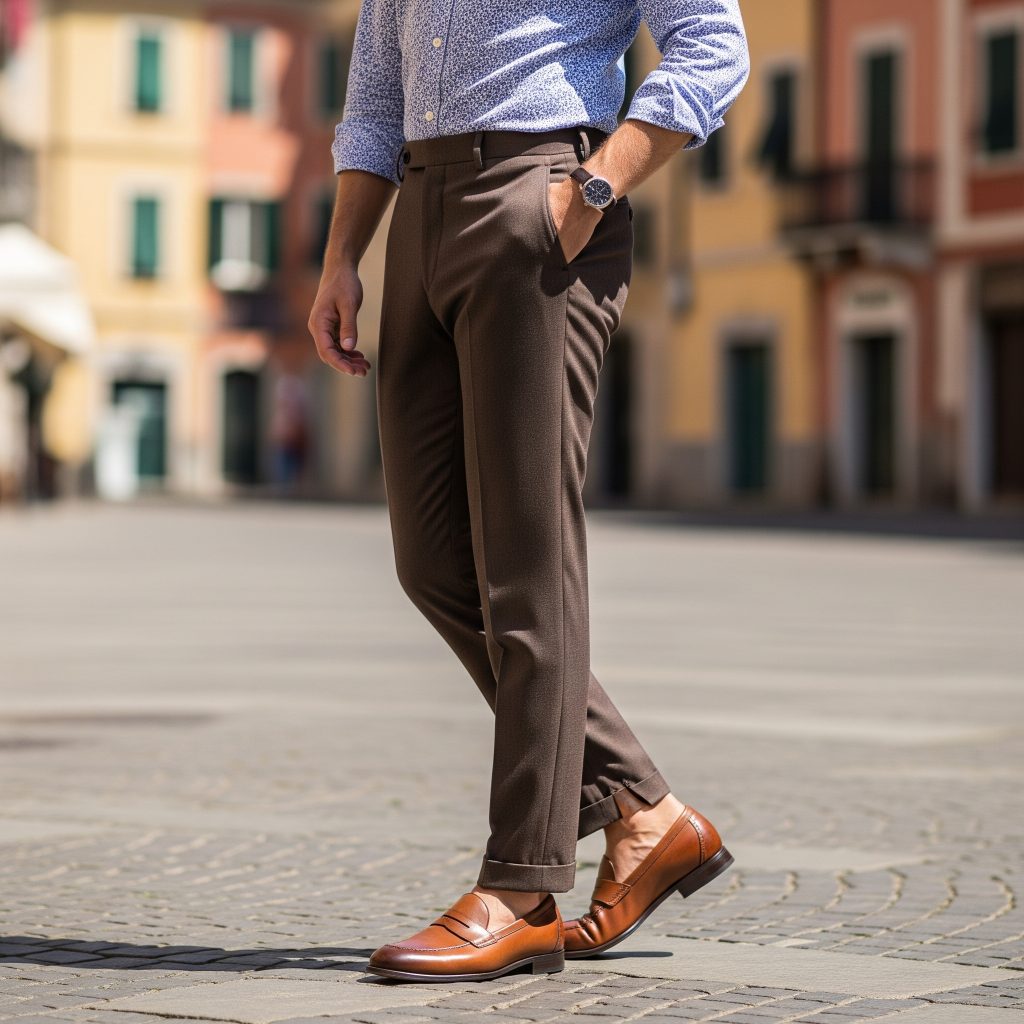
- Trouser Break: This is critical. While a full break (multiple folds at the ankle) was once common, Italian style often favors a “no break” (trousers just touching the shoes) or a “slight break” (one very subtle fold). This creates a cleaner, more elongated leg line.
- Trouser Rise: Many Italian men prefer a slightly higher-rise trouser than typical low-rise styles. This lengthens the leg, creates a cleaner waistline when tucking in shirts, and provides a more classic, flattering silhouette.
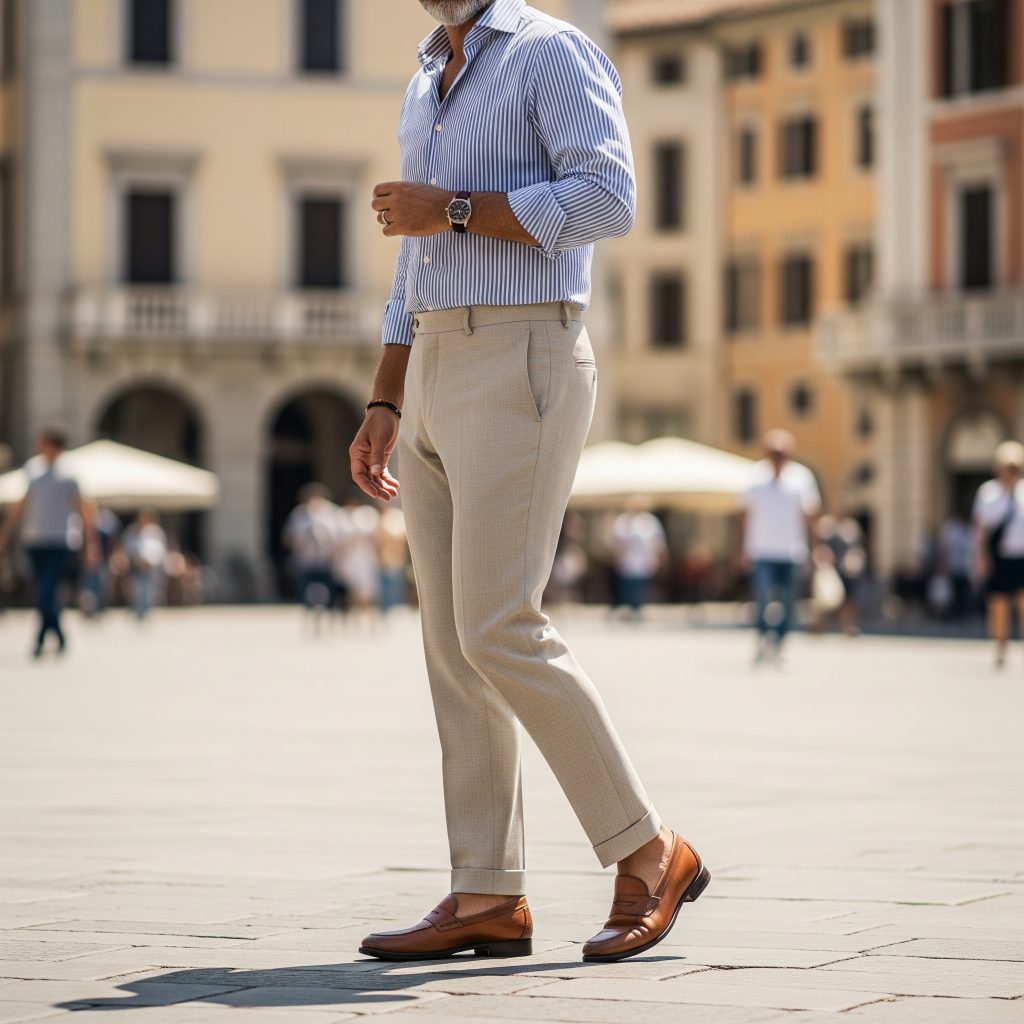
- Jacket Length: As mentioned, jackets should typically end around the middle of your thumb when your arms are relaxed, or just cover your backside. Avoid overly long jackets that shorten your legs.
- Lapel Width: Balance the width of your lapels with your body type and the rest of your outfit. Generally, Italian blazers might feature slightly narrower lapels, contributing to a sleek, modern look.
- Tie Width: Your tie width should generally correspond to the width of your lapels.
- Cuffing/Rolling Sleeves/Trousers: When appropriate (e.g., casual linen shirts, chinos), a neat cuff can adjust proportions and add a touch of sprezzatura.

5. Utilize Neutral Colors with Strategic Pops of Color: Sophistication in Simplicity
The Principle: Italian style often hinges on a foundation of sophisticated neutral colors. Think deep navies, rich greys, earthy browns, crisp whites, and versatile beiges. These colors form the backbone of a highly interchangeable and elegant wardrobe. However, Italians are masters at injecting personality and flair through “pops” of carefully chosen, vibrant colors in accessories or single garments, creating visual intrigue without being garish. It’s a balanced approach: a calm canvas with exciting brushstrokes.
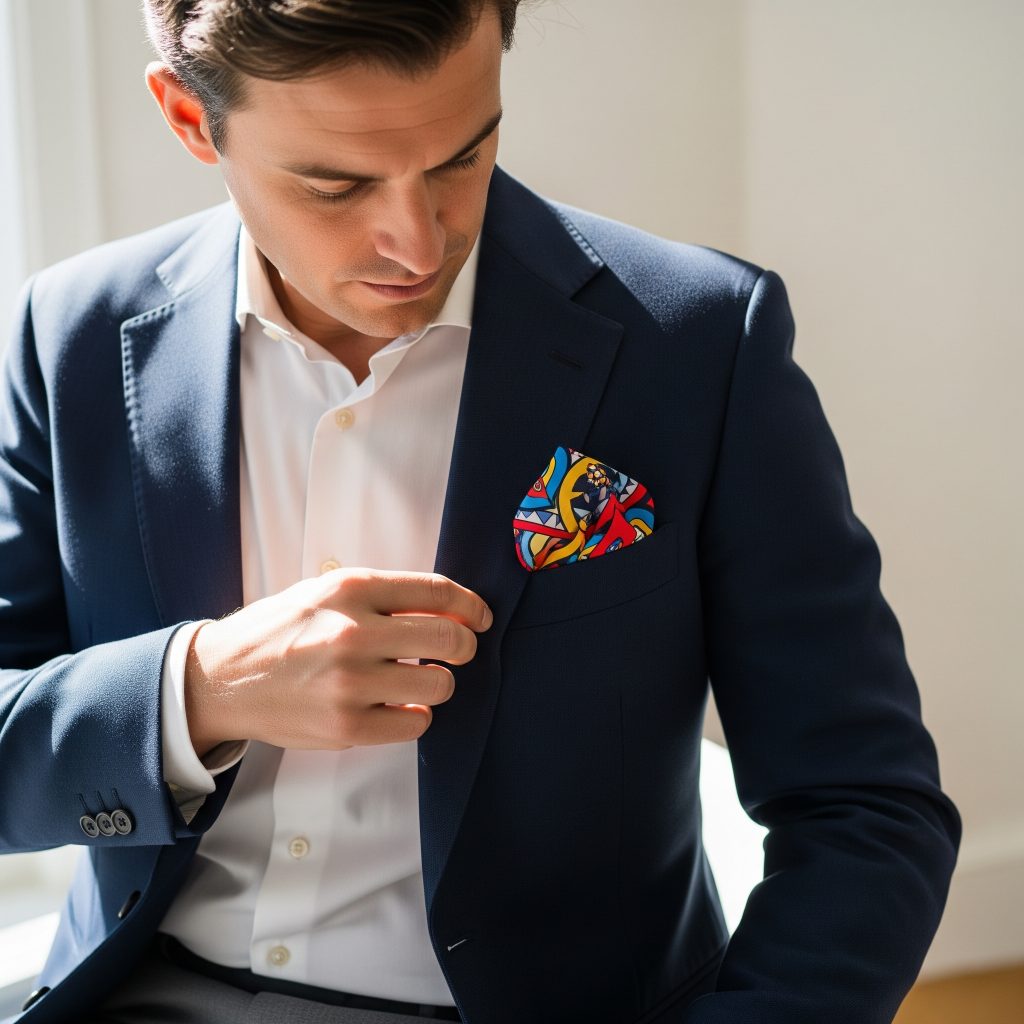
Why it Matters: Neutrals are inherently versatile and timeless. They allow you to mix and match pieces effortlessly, creating a cohesive and polished look every time. They also convey a sense of understated elegance and maturity. The strategic use of a “pop” of color prevents the outfit from becoming bland or monotonous. It draws the eye, highlights a specific detail, and reflects your personality. This controlled use of color is a hallmark of sophisticated dressing.
How to Adopt It:

- Build Your Core in Neutrals: Invest in well-fitting suits, blazers, trousers, and core shirts in navy, charcoal grey, white, and various shades of beige/tan. These are your workhorses.
- Introduce Color Thoughtfully:
- Accessories: This is the easiest and most common way. Think a vibrant silk pocket square, a colorful tie, patterned socks, or even a statement watch strap.
- Shirts: A sky blue, pale pink, or even a subtle striped or patterned shirt can add interest.
- Knitwear: A merino wool sweater in a rich burgundy, forest green, or mustard yellow worn under a neutral blazer can be striking.
- Outerwear (Less Common): While most coats are neutral, a trench coat in an unusual shade or a unique bomber jacket can be a statement.
- Consider Color Combinations: Research classic color pairings (e.g., navy and white, grey and burgundy, brown and sky blue).
- Don’t Overdo It: One or two well-placed pops of color are usually sufficient. Avoid too many competing colors, which can look chaotic. The aim is sophistication, not a circus.
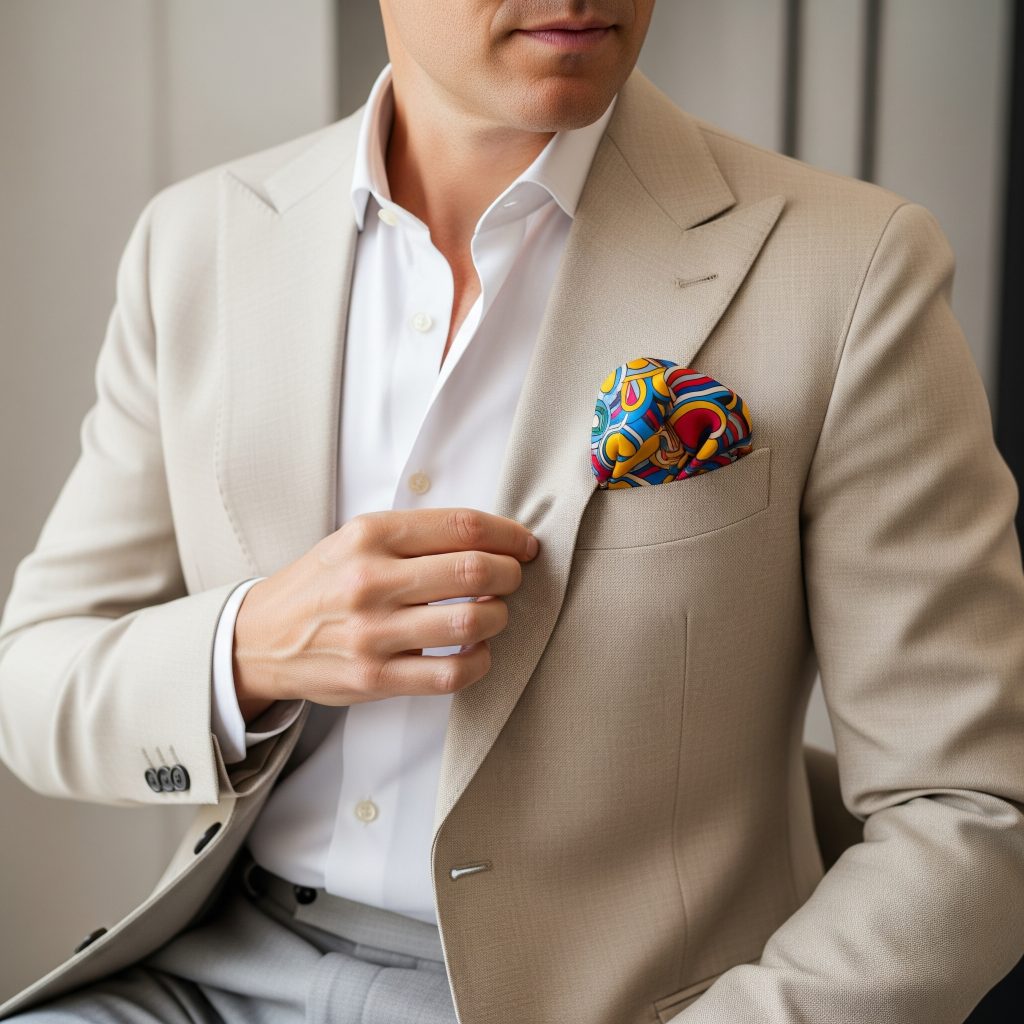
6. Accessorize Thoughtfully: The Details Make the Man
The Principle: For the Italian man, accessories are not an afterthought; they are integral to the outfit, completing the look and expressing individuality. It’s about quality over quantity, and selecting pieces that complement rather than overpower. The focus is on fine materials, classic designs, and understated elegance. This often includes well-crafted leather goods, sophisticated watches, quality eyewear, and refined neckwear or pocket squares.
Why it Matters: Accessories are the finishing touches that elevate an outfit from ordinary to exceptional. They demonstrate attention to detail and personal style. A well-chosen watch, a perfectly tied knot, or a strategically placed pocket square can speak volumes about your taste and discernment. They allow for personal expression within the confines of classic style, adding a touch of flair without resorting to loud garments.
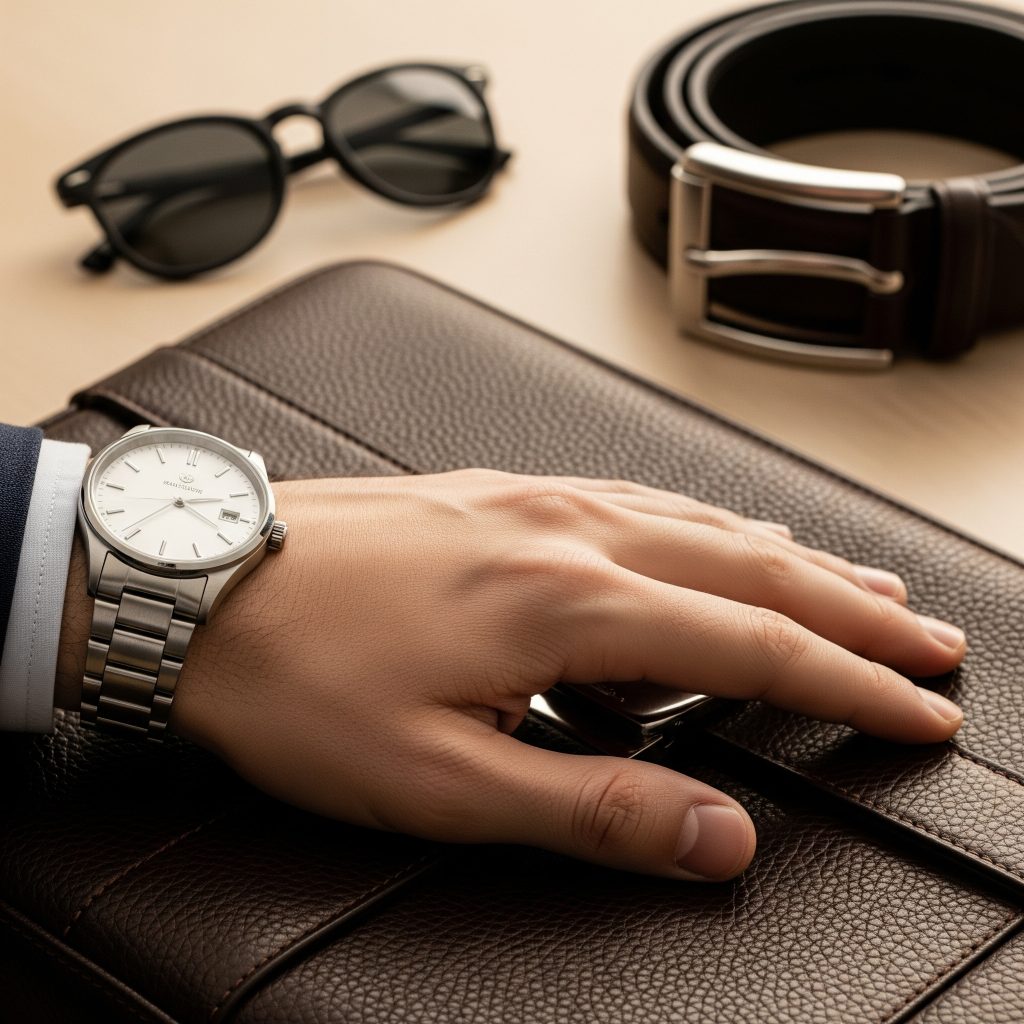
How to Adopt It:
- Quality Leather Goods: Invest in a good quality leather belt (match the color to your shoes when formal), a sleek wallet, and perhaps a stylish leather briefcase or messenger bag. Look for genuine leather that will age well.
- Watches: A classic, understated watch is a powerful statement. Choose a style that suits your preference – a dress watch for formal occasions, a classic diver or field watch for more casual wear.
- Eyewear: If you wear glasses, choose frames that flatter your face shape and personal style. Sunglasses are also a key accessory; classic designs like Wayfarers or Aviators are timeless.
- Pocket Squares: An absolute must for blazers and suits. Don’t match it exactly to your tie; instead, choose a complementary color or pattern. Learn different folds, from a simple puff to a crisp presidential fold.
- Ties: Choose quality silk, wool, or linen ties. Experiment with different knots (four-in-hand, half-Windsor) and widths to suit your collar.
- Socks: While often hidden, a subtle pattern or a pop of color in your socks can be a fun way to express personality, especially with slightly shorter trouser breaks.
- Subtlety is Key: Avoid over-accessorizing. One or two well-chosen accessories are far more effective than a multitude of items. Each piece should serve a purpose and add to the overall harmony.
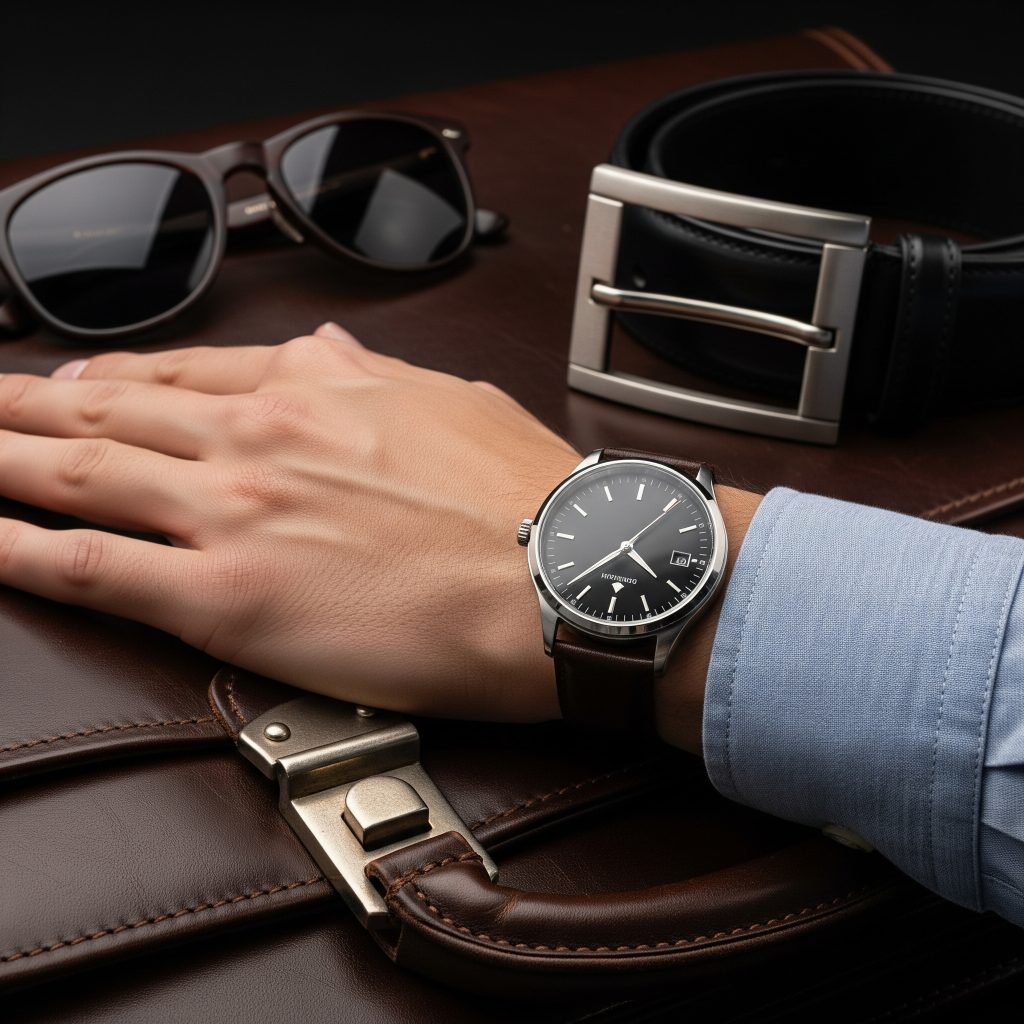
7. Choose the Right Footwear: The Foundation of Your Look
The Principle: In Italian style, shoes are never an afterthought. They are the anchor of your entire outfit, often dictating its formality and setting its tone. Italian men understand that a great outfit can be ruined by poor footwear, and conversely, excellent shoes can elevate even a simple ensemble. The focus is on quality leather, impeccable craftsmanship, and appropriate style for the occasion. Cleanliness and maintenance are also paramount.
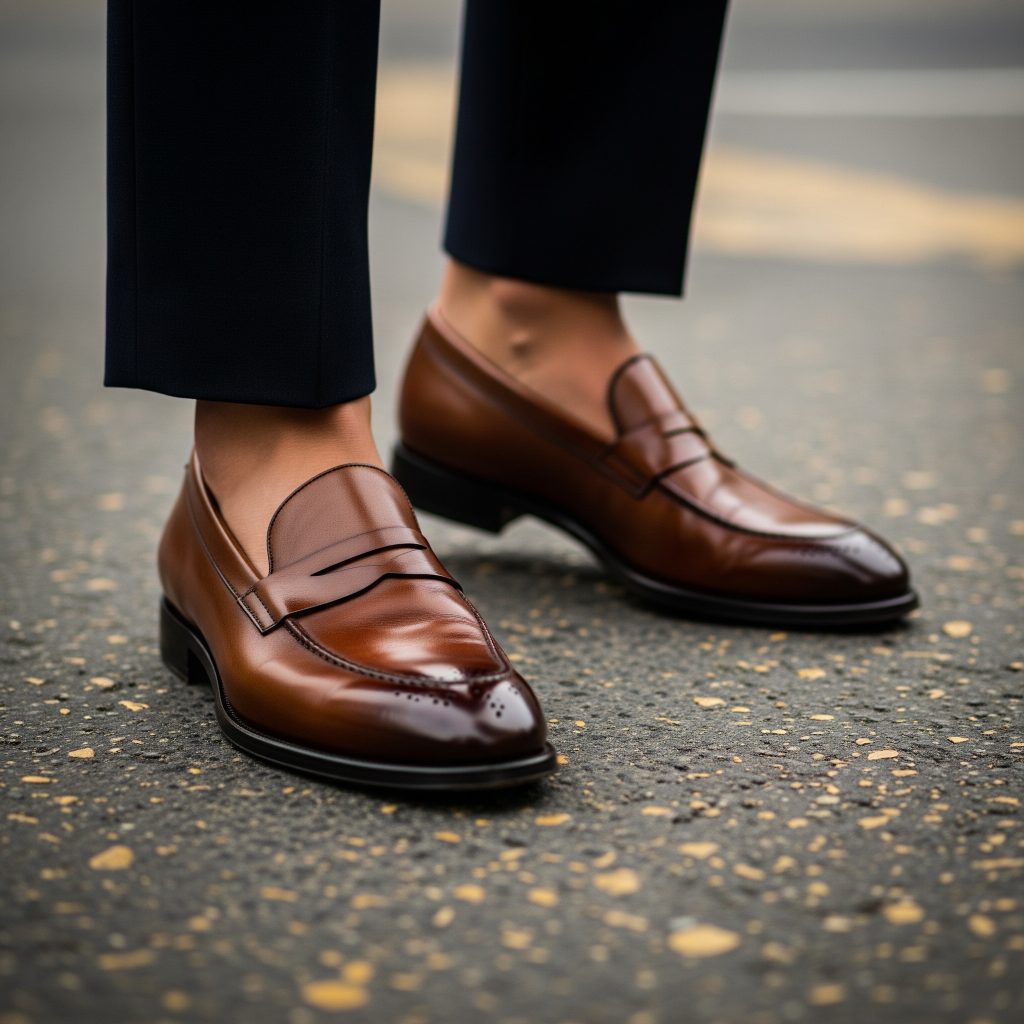
Why it Matters: Your shoes are often the first thing people notice, and they communicate a lot about your attention to detail and overall personal grooming. Quality shoes are comfortable, durable, and mold to your feet over time, becoming more comfortable with wear. They also project an image of sophistication and care. A man who takes pride in his shoes likely takes pride in other aspects of his life.
How to Adopt It:
- Invest in Quality: Good leather shoes are an investment. Look for Goodyear-welted or Blake-stitched construction for durability and the ability to be re-soled. Brands from Italy are often renowned for their footwear.
- Build a Diverse Collection:
- Dress Shoes: Oxford and Derby shoes in black and various shades of brown (e.g., tan, dark brown) are essential for formal wear and business.
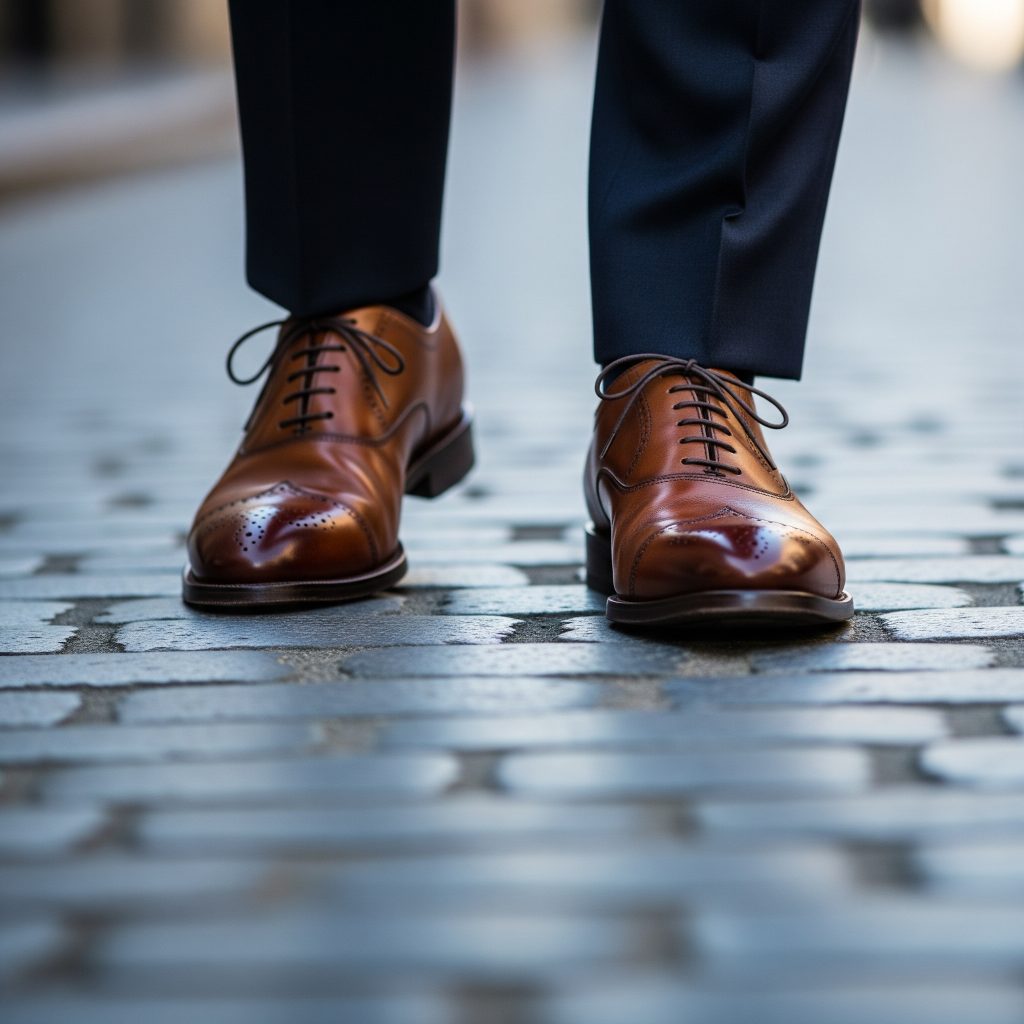
- Loafers: Penny loafers, horse-bit loafers, and driving moccasins are quintessential Italian casual-chic footwear. They are versatile for both smart-casual and slightly dressed-up looks.
- Sleek Sneakers: Not all sneakers are equal. Italians favor minimalist, clean, white leather sneakers for elevated casual looks. Avoid chunky, overly sporty trainers when aiming for this aesthetic.
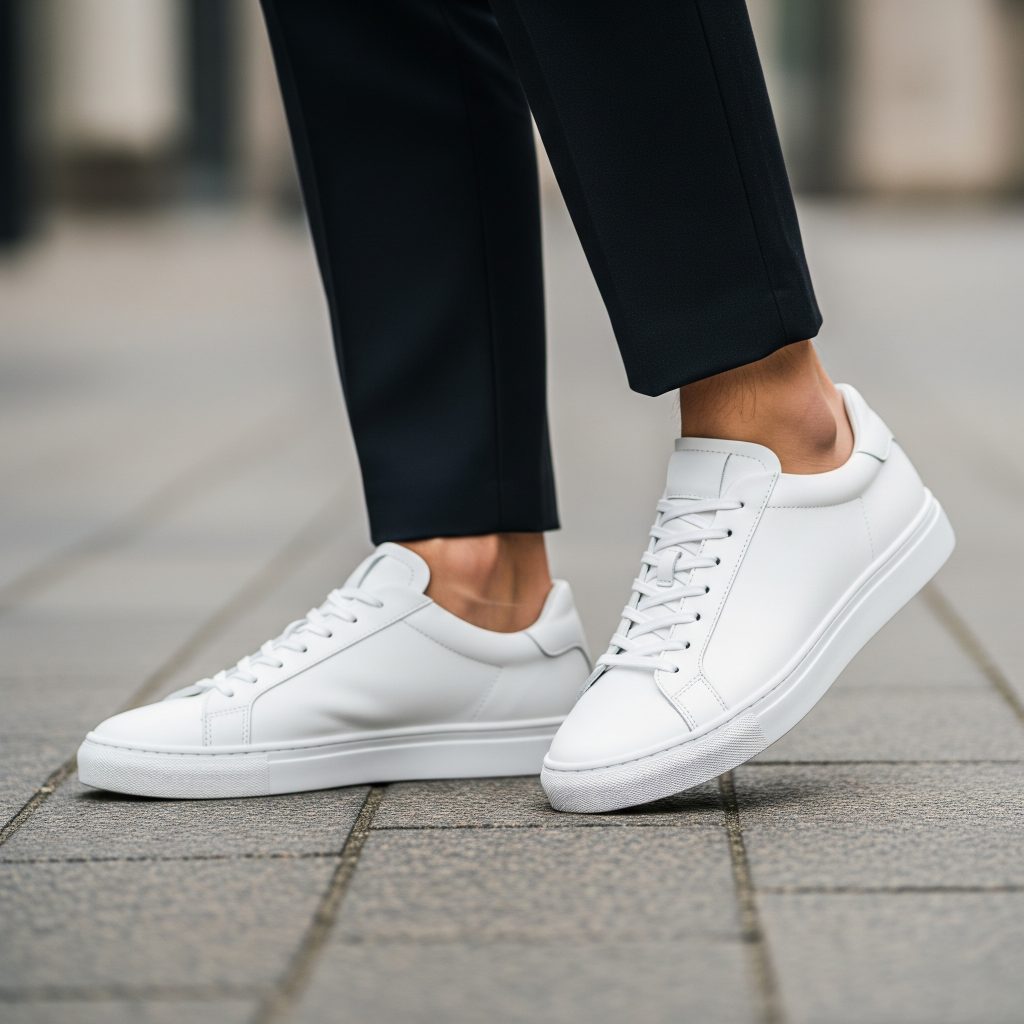
- Boots: Chelsea boots or chukka boots in suede or leather can add a rugged yet refined touch, especially in cooler months.
- Maintain Your Shoes: Regular cleaning, polishing, and using shoe trees are essential to keep your shoes looking their best and prolong their lifespan. A scuffed or dirty pair of shoes immediately detracts from an otherwise impeccable outfit.
- Match Shoes to Occasion: Don’t wear trainers with a suit (unless it’s a very specific, modern interpretation). Understand the formality of different shoe styles and pair them accordingly.
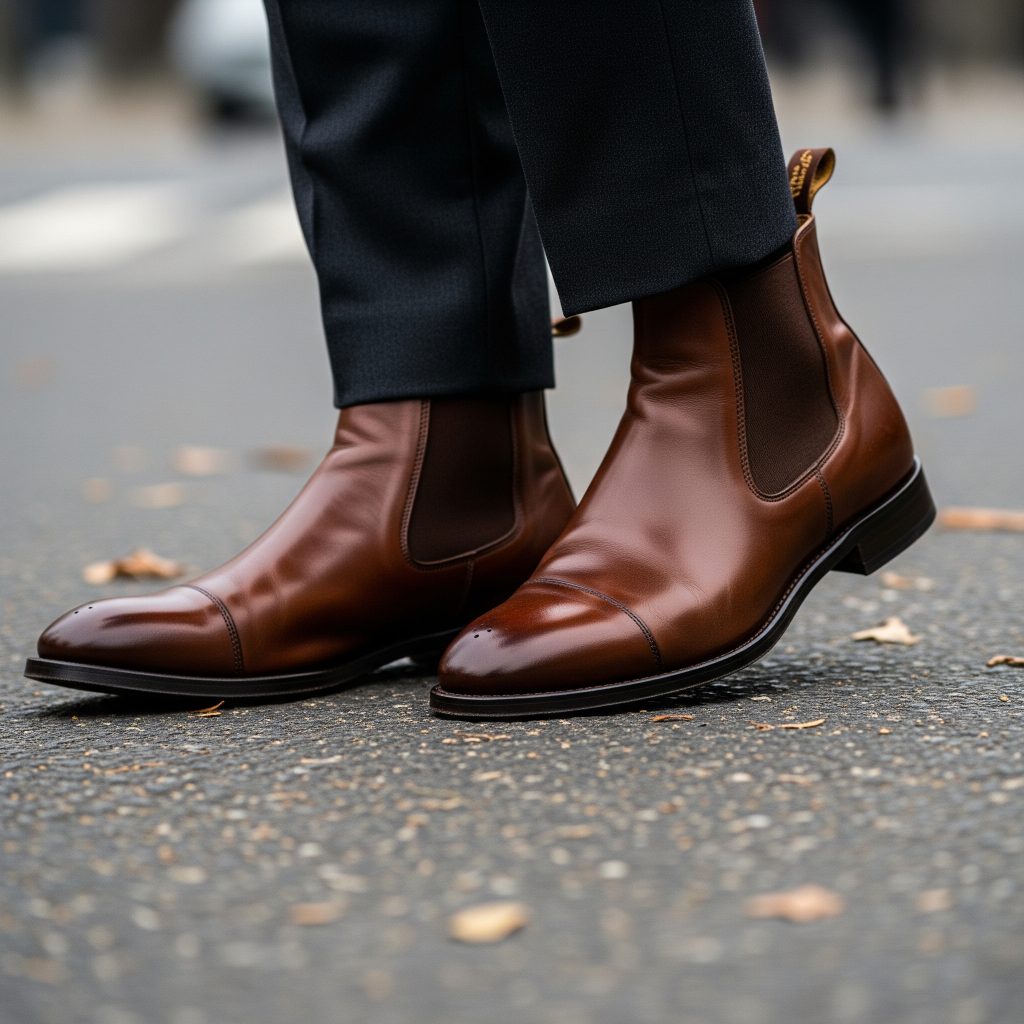
8. Go for Unstructured Blazers: The Epitome of Relaxed Elegance
The Principle: The unstructured blazer is a cornerstone of modern Italian style. Unlike traditional, heavily padded and lined blazers, unstructured versions are softer, lighter, and more relaxed. They often lack shoulder padding and have minimal or no lining, allowing them to drape naturally and conform to the body’s contours. This creates a look that is sophisticated yet supremely comfortable and approachable, perfect for the Italian’s seamless transition between work and leisure.
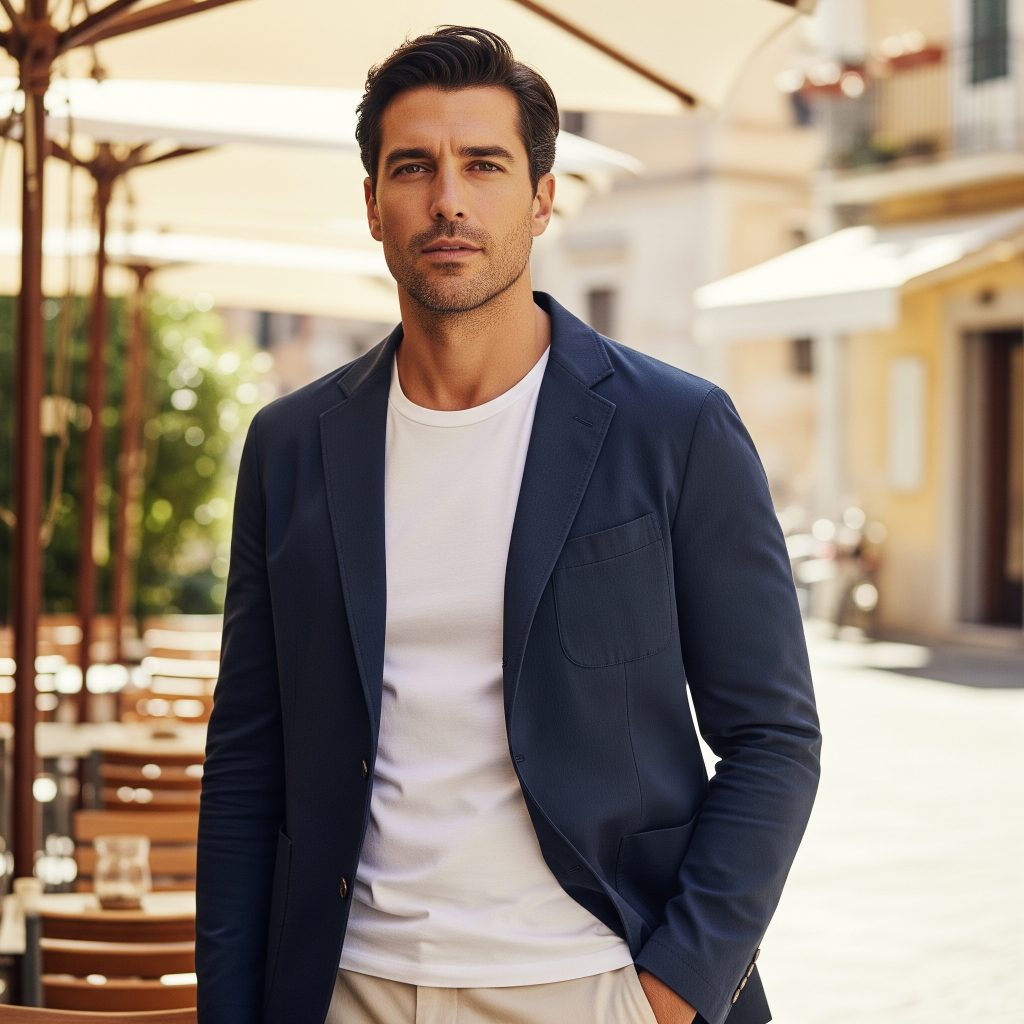
Why it Matters: The unstructured blazer embodies “sprezzatura” – that art of effortless elegance. It offers the formality of a blazer without the stiffness of a traditional suit jacket. This versatility means it can be dressed up with a dress shirt and tailored trousers, or dressed down with a t-shirt, jeans, or chinos. It’s the ultimate smart-casual chameleon, allowing for fluid movement and a silhouette that is both sharp and relaxed. Its lightweight nature also makes it ideal for warmer climates or easy layering.
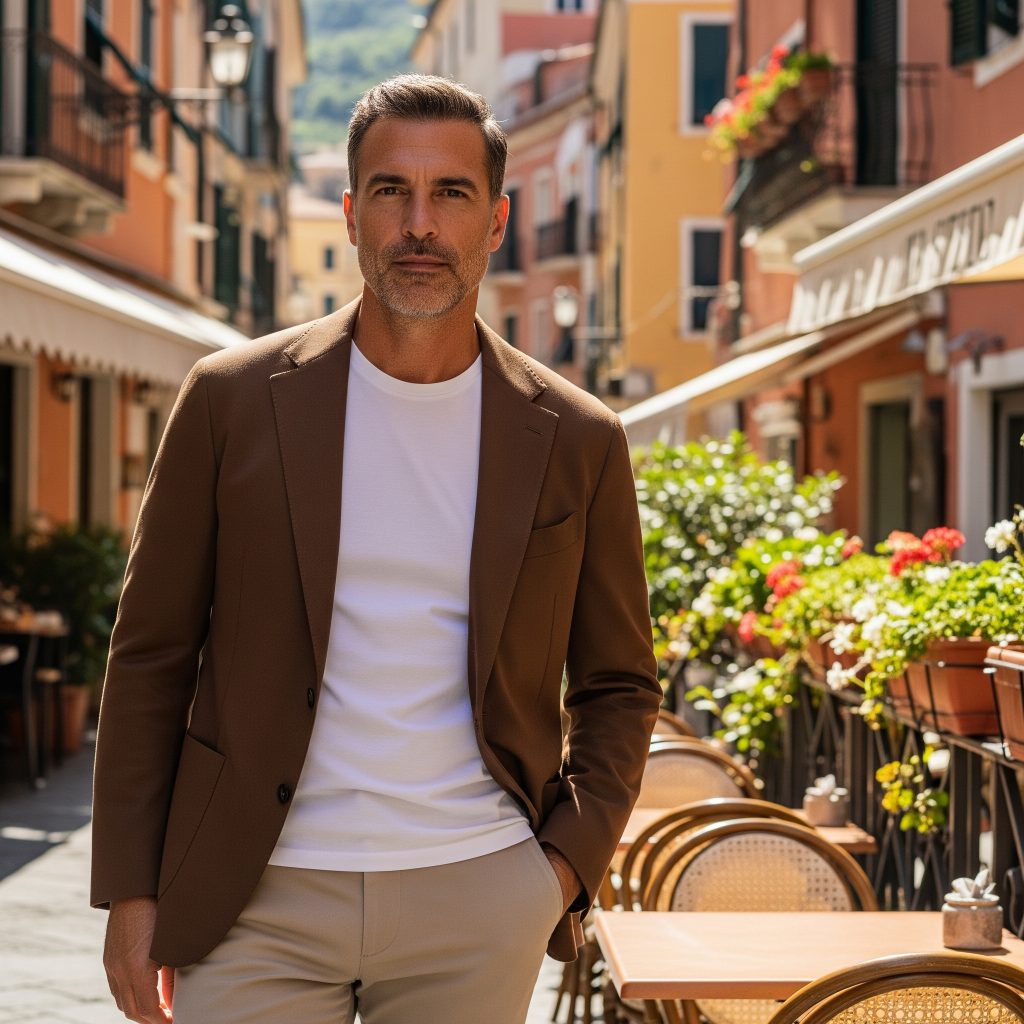
How to Adopt It:
- Fabric Choice is Key: Unstructured blazers are typically found in breathable fabrics like linen, cotton, hopsack wool, or blends. These fabrics inherently lend themselves to the relaxed drape.
- Fit is Still Paramount: While less rigid, the fit across the shoulders and chest is still crucial. The lack of padding means any ill-fitting areas will be more noticeable.
- Embrace the Softness: Don’t expect the crisp, rigid structure of a traditional suit jacket. The beauty of an unstructured blazer lies in its natural fall and comfortable feel.
- Versatility: Wear it over a t-shirt or polo for an elevated casual look. Pair it with a button-down shirt for smart casual. For summer, a linen unstructured blazer with light chinos is a classic.
- Colors: Navy, various shades of blue, beige, olive green, and light grey are excellent choices for versatility.
- Rolling Sleeves (Optional): For a truly casual look, Italian men often roll up the sleeves of an unstructured blazer, adding to the relaxed vibe.
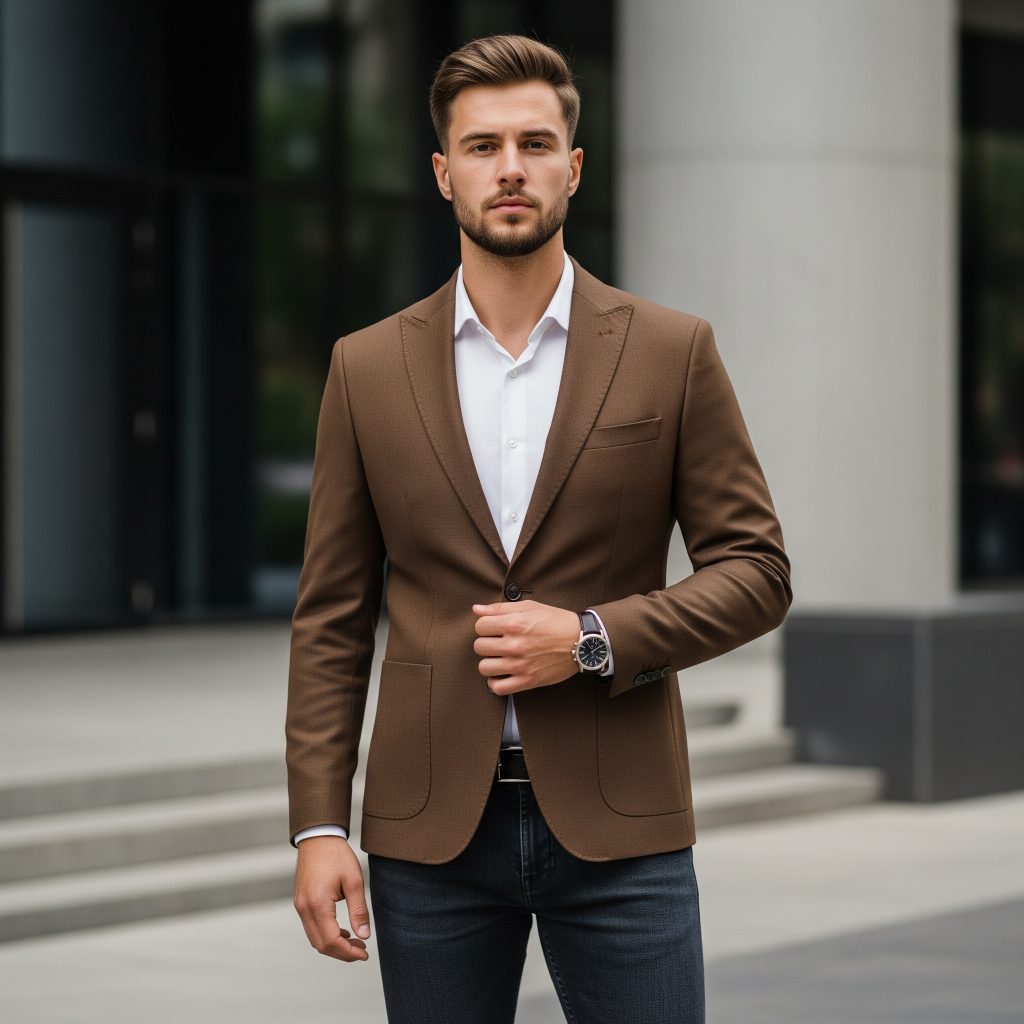
9. Master the “Sprezzatura”: The Art of Effortless Nonchalance
The Principle: Sprezzatura is arguably the most elusive and yet defining characteristic of Italian style. It’s the art of making studied nonchalance look effortless. It’s about presenting yourself with a deliberate carelessness, a subtle imperfection that suggests you didn’t try too hard, even though you meticulously planned every detail. It’s the undone button, the casually draped scarf, the imperfectly folded pocket square, or the slightly disheveled hair that adds character and authenticity. It’s the antithesis of looking stiff or overly primped.

Why it Matters: Sprezzatura adds personality, charm, and a touch of rebellious individuality to an otherwise perfect outfit. It prevents you from looking like you’re trying too hard or wearing a costume. It conveys a sense of innate style and confidence, suggesting that you are so naturally stylish, you don’t need to be meticulously perfect. It humanizes the elegance, making it relatable and aspirational at the same time. It’s the secret ingredient that makes Italian style so magnetic.
How to Adopt It (Subtly):
- The Undone Button: Leave the bottom button of your shirt or waistcoat undone (always the bottom button of a suit jacket, never the blazer).
- The Rolled Sleeve: Neatly, but casually, roll up the sleeves of your shirt or even your unstructured blazer.
- The Imperfect Pocket Square: Don’t aim for a perfectly symmetrical fold. A puff fold or a slightly uneven fold often looks more natural.
- The Casual Scarf: Drape a scarf casually rather than tying it in a rigid knot.
- Subtle Disarray: A slightly unbuttoned collar, a tie knot that isn’t perfectly tight, or even slightly messy hair can be elements of sprezzatura, as long as it looks intentional and not genuinely sloppy.
- Confidence is Key: The attitude behind sprezzatura is more important than the specific details. You have to own it. If you’re uncomfortable with a bit of “messiness,” it will look forced.
- Context: Sprezzatura is more applicable in smart-casual or less formal settings. A fully formal business meeting might not be the place for a heavily “sprezzatura” look.
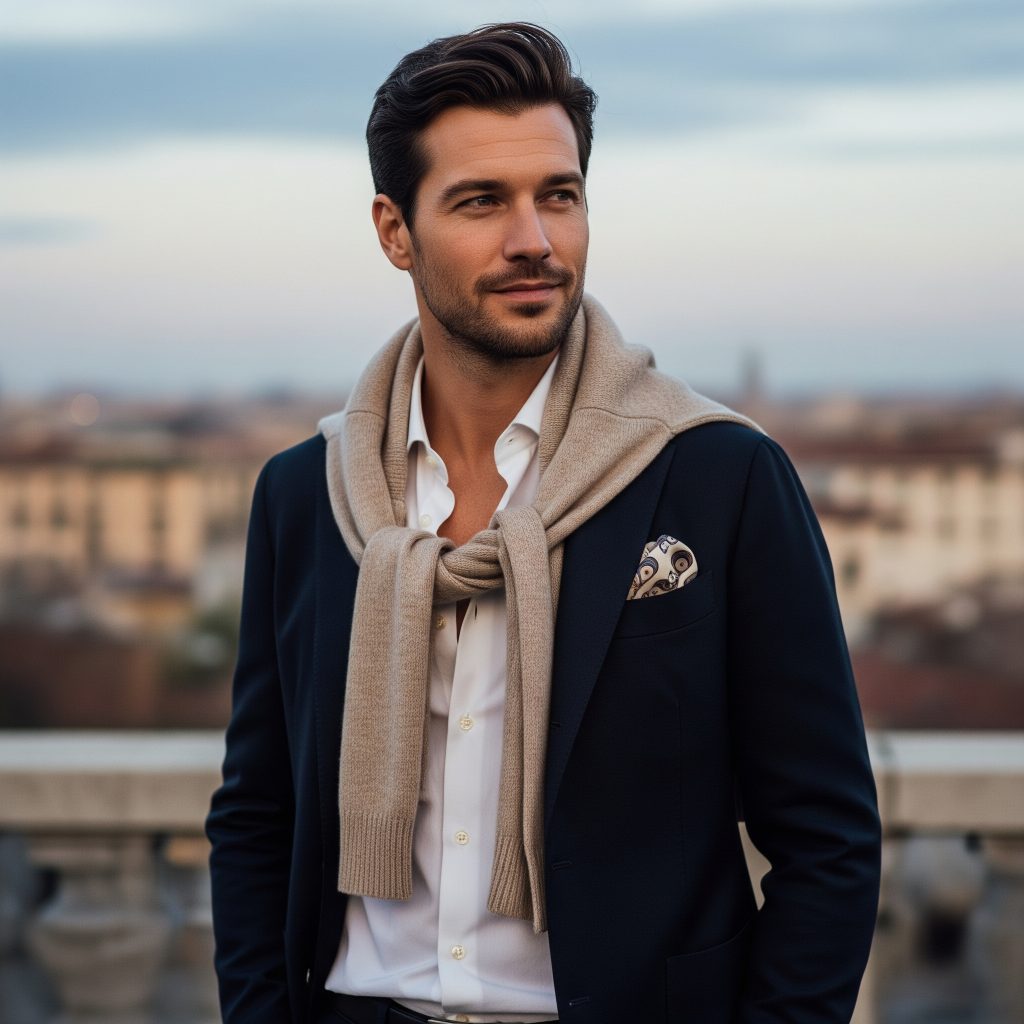
10. Confidence is Your Best Accessory: Wear Your Clothes, Don’t Let Them Wear You
The Principle: This is the ultimate, non-negotiable rule of Italian style, and indeed, any truly masculine approach to dressing. No matter how expensive your suit, how fine your fabric, or how perfectly tailored your trousers, if you don’t wear your clothes with confidence, the entire effect is lost. Italian men possess an innate self-assuredness that radiates through their posture, their walk, and their interactions. They own their look; their clothes are an extension of their personality, not a costume.
Why it Matters: Confidence transforms clothes from mere garments into a statement. It affects how you carry yourself, how you interact with others, and how you feel. When you’re confident in what you’re wearing, you stand taller, make eye contact, and exude an aura of capability. This isn’t about arrogance; it’s about a quiet self-possession and a belief in your own presence. Italian men wear their clothes with a sense of nonchalance, knowing they look good, but not needing external validation.
How to Adopt It:
- Posture: Stand tall, shoulders back, head held high. A strong posture immediately projects confidence.
- Own Your Look: Choose clothes that make you feel good, not just what’s trendy. If you don’t feel comfortable or authentic in an outfit, it will show.
- Practice Self-Awareness: Understand your body type, what colors suit you, and what styles make you feel your best.
- Don’t Overthink It: Once you’re dressed, stop worrying about your clothes. Focus on the conversation, your tasks, and your interactions. The ease with which you wear your clothes is a key part of confidence.
- Smile and Engage: Confidence is also expressed through open body language, eye contact, and genuine engagement with others.
- It’s an Inside Job: Ultimately, true confidence stems from within. Develop your skills, pursue your passions, and build a strong character. Your outward appearance will naturally reflect this inner strength.
- Dress for Yourself: While external perceptions matter, the primary reason to dress well should be for yourself. When you feel good, you project good.

The True Spirit of Italian Style
Embracing Italian style isn’t about rigid rules or slavishly following trends. It’s about understanding and internalizing a philosophy of dressing that prioritizes quality, fit, and an innate sense of self. It’s about building a wardrobe that empowers you, allows for comfortable movement, and reflects a masculine confidence that doesn’t need to shout to be heard.
Forget the fleeting fads and the pressure to conform. The Italian way is about timeless elegance, investing in pieces that last, and presenting yourself as a man who values craftsmanship, attention to detail, and a quiet strength. It’s about being sharp without being stiff, refined without being effeminate, and effortlessly stylish in every situation.
Start with these 10 principles, apply them with discernment, and watch as your personal style transforms. Remember, the clothes are merely tools; the true statement comes from the man who wears them. It’s time to build a wardrobe that reflects the confident, self-possessed man you are, ready to tackle any challenge with presence and undeniable style.
Join the Brotherhood – Get the Newsletter
Why join?
Because average isn’t an option.
Our newsletter delivers raw insights on strength, discipline, and growth – straight to your inbox. No fluff. No excuses. Just real tools to help you lead, build, and conquer.
Join the Brotherhood. Rise above.

